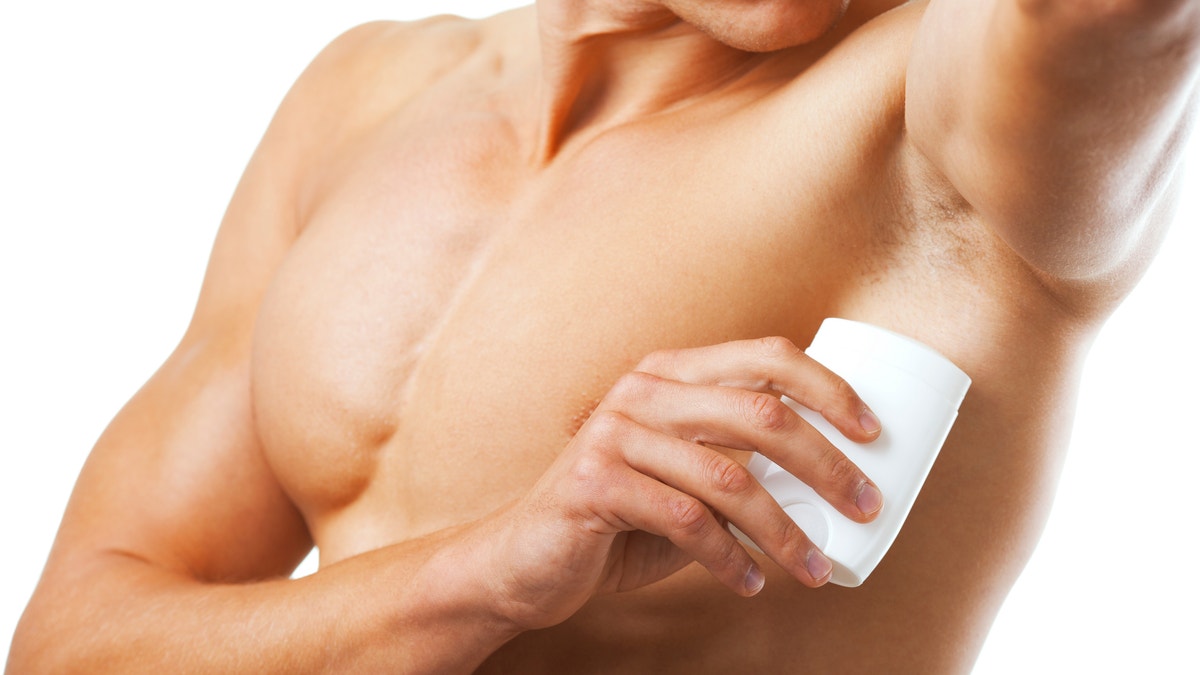
A man takes care of his hygiene by applying deodorant to his armpit. (Geber86)
Everyone sweats when they get hot. It’s how our bodies naturally cool down. Some of us may sweat a little more than others—making a post-workout shampooing necessary no matter the activity. But for other people, their sweating is so excessive it interferes with everyday life.
About one in 50 people suffer from excessive sweating, or hyperhidrosis, Dr. Raffy Karamanoukian, RealSelf advisor and LA-based plastic surgeon who specializes in treating hyperhidrosis, tells SELF. Hyperhidrosis can affect any part of the body, but typically occurs in the armpits, hands, feet, or head. Excessive sweating can be a side effect of some medical problems, but it usually happens on its own in otherwise healthy adolescents and adults. For the bulk of people, no one really knows what causes it, Karamanoukian said.
MORE FROM SELF: The One Thing Hairstylists Wish You’d Stop Doing
There are two likely reasons: “The brain and nervous system are sending too many signals to sweat. Or, the nervous system is acting normally but sweat glands in a certain area are hyperactive.” Instead of figuring out why it’s happening, doctors typically focus on how to stop it, especially if it’s affecting a person’s quality of life.
There are conservative ways to treat excessive sweating, and more aggressive protocols available if the first lines of defense fail. Here are the most common treatments for hyperhidrosis, and what you can expect from each.
1. Prescription antiperspirants
Chances are even clinical-strength drugstore antiperspirants just won’t cut it for someone with hyperhidrosis. Sometimes, a prescription-strength one, like Drysol, may be strong enough to stop your sweating. They have a higher concentration of aluminum chloride than what you can buy OTC, so they work in basically the same way as regular antiperspirants, but not exactly. Rather than swiping it on before you leave the house, you typically put it on before bed (P.S. it might seriously sting) so it can do its thing overnight.
MORE FROM SELF: What's Your Sex Number?
2. Botox
Botox works by blocking the signals from the nerves that activate your sweat glands in a certain area.
“Provided you do it with an experienced practitioner, Botox has very little risk within the confines of the normal dosages,” Karamanoukian said.
Blocking sweat from one area of your body isn’t going to make you sweat more somewhere else. “We’re only treating a small percentage of overall sweat glands. They’re no longer normal, in the sense that they don’t really abide by the normal reasons we sweat,” like the temperature of the room we’re in. So your body isn’t benefiting from them anyway. The downside? One treatment only lasts about four to five months, and can cost you $1,000 to $2,000 each time. Insurance companies may pay for it if it’s deemed medically necessary, Karamanoukian said. Otherwise, it can get pretty pricey.
MORE FROM SELF: 5 Reasons You’re Not Having An Orgasm (And How To Make It More Likely)
3. Oral medications
If your sweating is a problem in more than one area, a systemic treatment might be a better option. Anticholinergics are a class of medications that block the neurotransmitter acetylcholine—which is responsible for telling your body to sweat. Though they’re not FDA-approved to treat hyperhidrosis (it’s considered an off-label use), anticholinergic medications are commonly prescribed for this. The downside: These meds may come with some unpleasant side effects such as dry mouth, constipation, and blurred vision.
MORE FROM SELF: 18 Things You Should Never Put In Your Vagina
4. Zapping overactive sweat glands with electricity
Though the treatment is not as common as it once was, iontophoresis is most often used for those with hyperhidrosis of the hands and/or feet. The procedure involves placing the affected area in water, and then waving a device that sends an electrical charge over it.
“It basically tasers the sweat glands,” Karamanoukian said.
Don’t worry, the current isn’t big enough to electrocute you. Doctors aren’t exactly sure why it works, but it seems that the current is able to plug the glands temporarily. It’s effective, but not permanent—typically, you’d have to treat the area multiple times each week to maintain results.
MORE FROM SELF: The One Food Nutritionists Eat Every Single Day
5. Zapping overactive sweat glands with microwaves
Karamanoukian said more energy-based treatments are on their way to becoming FDA-approved. The one that is approved already is Miradry, which uses microwave energy to target the layer of the skin that contains sweat glands, heat them up, and make the excess ones disappear.
“It has revolutionized the treatment of sweating, but the limitation is it’s only FDA-approved for a specific area,” which is the armpits, Karamanoukian said.
He noted there’s talk of other lasers and ultrasound-based treatments that are hitting the market and could become options in the future. “In the next couple years, [these will] most likely replace Botox” as the most effective noninvasive solution to hyperhidrosis.
6. Surgery
For those who don’t respond to all of these noninvasive treatments, a treatment called suction curettage can be done.
“It’s a minimally invasive surgical procedure where we actually suck out sweat glands from underneath the skin,” Karamanoukian explained. “It’s really easy, incisions are tiny, and it works really well.”
MORE FROM SELF: This Is What Sex Looks Like From Inside The Vagina, Because Science
When all else fails—and there’s always a small group of patients who fail even Miradry, Karamanoukian said—your doctor may suggest a surgery called endoscopic thoracic sympathectomy (ETS). It’s invasive, and you’ll be put under general anesthesia.
“It involves clipping the nerve that gives the message to the sweat glands and armpit,” Karamanoukian said.
However, ETS can cause a handful of side effects, so be sure to get all of the info from your doctor before opting for this. As more advanced noninvasive technologies emerge, hopefully invasive last resorts will become obsolete.
